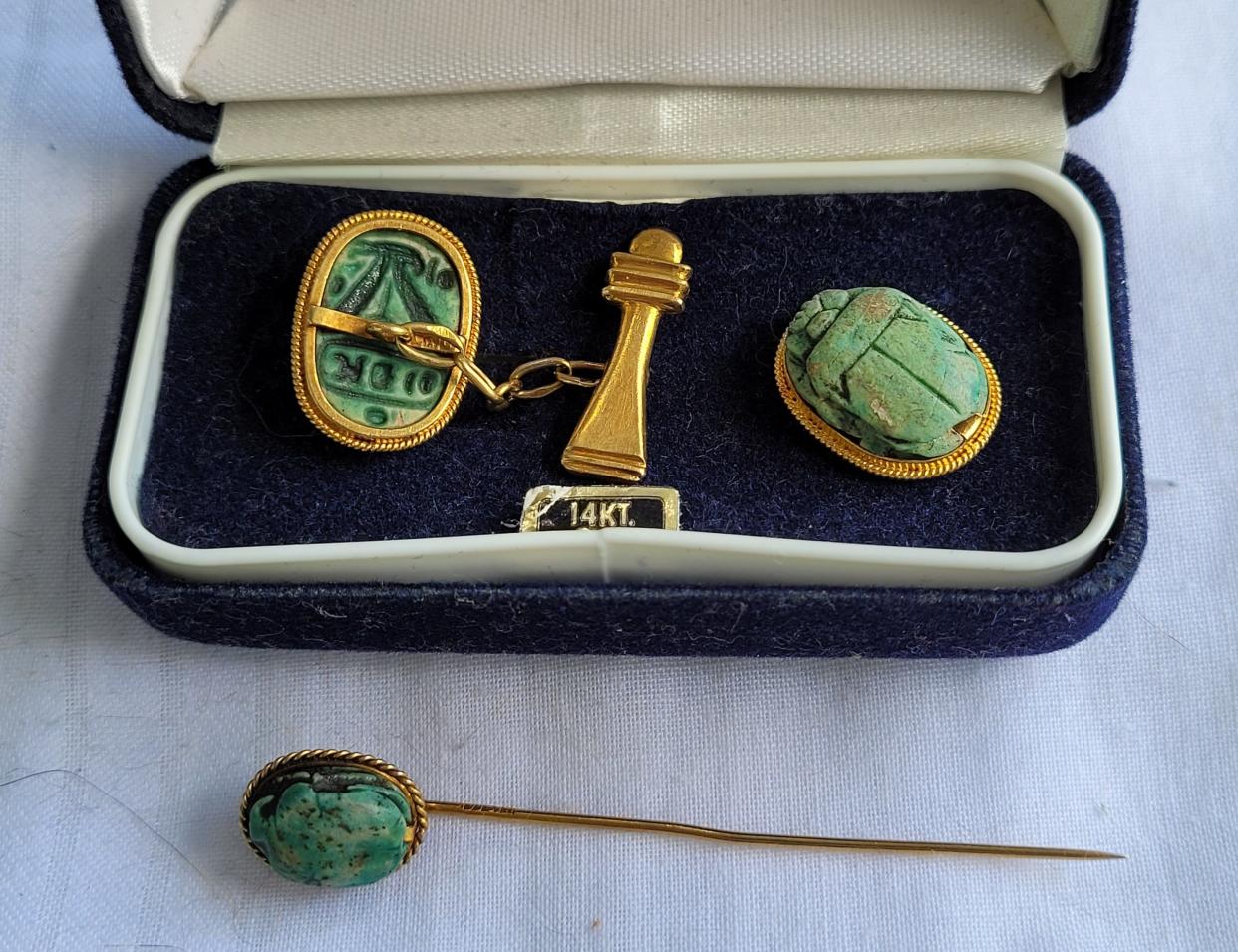John Sikorski: Tie pin and cufflinks could be thousands of years old

Q: You might find these of interest; a tie pin and pair of cufflinks that were my grandfather's. He and my grandmother traveled to Egypt, I am guessing in the 1920s. The metal, I assume, is gold. I am not sure if the scarabs were set in Cairo or back in Boston. There are different inscriptions on the backs. I wonder if they have any specific meaning or are just random characters.
There was a very distinctive photo of them on the Giza Plateau in front of the Great Pyramids, my grandmother seated in an open touring car and my grandfather perched on the back of a camel in his linen suit and Panama hat, as one dressed when traveling abroad back in the day.
My grandfather, not a tall man, was circumferentially challenged and struck a peculiar pose that one could only describe as comic by today's sensibilities. It must have been quite a feat to get him up and then off the camel for the photo.
Any tips for care would be appreciated. Thanks for your consideration. — S., Internet
A: I appreciate the descriptive story of your grandfather and grandmother’s trip to Egypt. I can clearly visualize the scene you describe — well done. The scarab cufflinks and tie tack appear to be of a high-quality standard. I imagine the Egyptian-impressed hallmarks are the maker’s mark, and the precious metal mark that indicates 14-carat gold indicates the scarabs were set in Cairo. I do not think there is any conservation necessary. They are more than 100 years old, perhaps even thousands of years old. I suggest taking them to the Museum of Natural History. Perhaps someone there can give you an opinion of age.
Q: In cleaning out a closet I came upon my parents’ mahjong set. Although they played with it weekly, it is in very good condition and in a lovely wood case. I believe the tiles are ivory. The set has to be at least 80 years old. Are these sets valuable? There are no marks to indicate where it was made, but I assume it is Chinese. Can you give me an idea of value, if any? — D.E., Internet
A: The mahjong game was developed in China in the 19th century. Its popularity spread throughout Europe and became popular in the United States by the 20th century. There are mahjong clubs throughout America, and mahjong can be played online currently. The old sets are very attractive with scrimshaw-decorated tiles made of ivory and bone. If your set is complete, it should have 144 pieces. If the pieces are made of ivory and in good condition, the set would likely sell in the $500 range.
— John Sikorski, with more than 35 years of experience, is an Ocala-based antiques advisor, consultant and broker. Send your questions to Sikorski's Attic, c/o The Ocala Star-Banner, 2121 SW 19th Ave. Road, Ocala, FL 34471-7752, or email absantique@aol.com.
This article originally appeared on The Gainesville Sun: John Sikorski: Tie pin and cufflinks could be thousands of years old

